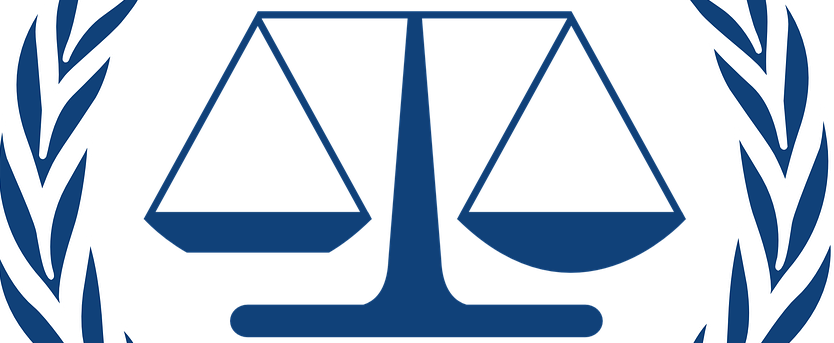
Immunology and Infection
Related topics and terms
- Cardiology
- Dermatology and Allergy
- Ear, Nose and Throat and Vision
- Everyday medical complaints and preventive care
- Healthcare education and Nursing
- Internal Medicine and Diagnosis
- Medical ethics and health Law
- Neurology and Brains
- Obstetrics and Gynecology
- Oncology and Tumor
- Orthopedics and Sports medicine
- Pediatrics and Child Health
- Pharmacology and Medication
- Physiotherapy and Revalidation
- Psychiatry and Mental disorder
- Pulmonology
- Surgery and Injury
- Tropical medicine and Travel medicine
 SUMMARIES
SUMMARIES
Check or search summaries, tests and study assistance within topic: 'Immunology and Infection'
Make a selection, to find more, or other, summaries and study assistance than you see below
| | Samenvattingen: startpagina voor geneeskunde en gezondheidszorg Aantekeningen, samenvattingen en tentamentests voor geneeskunde en gezondheidszorg Waar gaat de pagina over? Inhoud: informatie and assortimentwijzers voor het gebruik... |
| | Summaries: home page for medicine and healthcare Notes, summaries, study assistance and exams for medicine and health care What is this page about? Contents: information and assortment pointers related to the use of... |
| | What is a virus? What is a virus? |
| | Samenvatting bij de 2e druk van Immunology for Medical Students van Nairn en Helbert Boeksamenvatting bij Immunology for Medical Students - Nairn, Helbert - 2e druk |
| | Samenvatting bij de 4e druk van Leerboek microbiologie en infectieziekten van Hoepelman, Kroes, Sauerwein, Verbrugh en Nouwen Boeksamenvatting bij Leerboek microbiologie en infectieziekten - Hoepelman, Kroes, Sauerwein, Verbrugh, Nouwen |
 | What are challenges and perspectives in gene-environment interactions in asthma and allergies? - Kauffmann and Demenais, 2012 - Article Summary with the article: What are challenges and perspectives in gene-environment interactions in asthma and allergies? - Kauffmann and Demenais, 2012 |
| | Samenvatting bij de 4e druk van Medische immunologie van Benner Boeksamenvatting bij Medische immunologie - Benner |
| | Samenvatting Introductie tot Psychoneuroimmunologie Samenvatting Introductie tot Psychoneuroimmunologie |
| | Samenvatting bij de 5e druk van Sherris Medical Microbiology van Ryan en Ray e.a. Boeksamenvatting bij Sherris Medical Microbiology van Ryan, Ray e.a. - 5e druk |
 | Belangrijke bacteriësoorten die infecties veroorzaken: Bacteriologie en Pathogenese Overzicht belangrijkste bacteriesoorten die ziektes veroorzaken: Stafylococcen, Coagulase-negatieve staphylococcen, Streptococcen, Haemophilus, Mycobacteria, Neisseria,... |
Content and contributions related to summaries, study assistance and study skills
...to help another, travel with care, work together, learn to share and inspire with your experience
 Summaries: home page
Summaries: home page
Home page for the use of summaries on WorldSupporter
What is this page about?
- Contents: information about using and finding summaries of study books, scientific articles, academic concepts and practice exams on WorldSupporter
- Study areas: Business, Education, Health, Psychology, Law, Nature, Society and more
- Languages: English, Dutch
- Access: Public
Where to go next?
- for all summaries per study field: All areas for summaries, study and work
- for all summaries per study field in NL: Alle samenvattingen, studies en werkgebieden
What to find below?
- Summaries per study and study field
- Summaries per type and form
- How to use and find summaries, study notes en practice exams on JoHo WorldSupporter?
- How and why would you use summaries?
- Finding summaries practice exams on JoHo WorldSupporter
- Quicklinks to fields of study for summaries and study assistance
- Main theme pages for learn and study
- FAQ: questions and answers about summaries
 Summaries: per type and form
Summaries: per type and form
Home page for summaries by type and form
- Summary sort: Study books, Scientific articles, Academic Concepts
- Areas: Business, Education, Health, Psychology, Law, Nature, Society and more
- Languages: English, Dutch
- Access: This study guide contains exclusive and publicly available study materials
 Summaries: per study field and university
Summaries: per study field and university
Summaries per study and study field
What is this page about?
- Contents: information about summaries per study and study field on WorldSupporter
- Study areas: Business, Education, Health, Psychology, Law, Nature, Society and more
- Languages: English, Dutch
- Access: Public
Where to go next?
- for all summaries per study field: All areas for summaries, study and work
- for all summaries per study field in NL: Alle samenvattingen, studies en werkgebieden
What to find below?
- Highlighted pages per study field
- FAQ
 Exams: home page for exams, exam tips and study tips
Exams: home page for exams, exam tips and study tips
Taking and passing exams, using study tips and learning to study
What is this page about?
- Contents: information for exams, exam tips and study tips on WorldSupporter
- Study areas: Business, Education, Health, Psychology, Law, Nature, Society and more
- Languages: English, Dutch
- Access: Public, Exclusive
Where to go next?
- for all summaries per study field: All areas for summaries, study and work
- for all summaries per study field in NL: Alle samenvattingen, studies en werkgebieden
What to find below?
- Highlighted content concerning exams, exam tips and study tips
 Exams: home bundle
Exams: home bundle
Bundled content, suggestions, stories and tips about learning, making and passing exams, and study skills
 Themes: home bundles per study and working fields
Themes: home bundles per study and working fields
Bundeld bundles by study and working field
 Themes: main theme pages for summaries and study assistance
Themes: main theme pages for summaries and study assistance
Theme pages for summaries and study assistance
 Themes: main theme pages for learn and study
Themes: main theme pages for learn and study
WorldSupporter theme pages for learn and study
 Samenvattingen: startbundel
Samenvattingen: startbundel
Samenvattingen: startbundel
- 513 reads
Make a selection, to find more tips than you see below
 | Go on a medical internship project in Africa Go on a medical internship project in Ghana or Uganda. This 8 week project offers you an opportunity to do an observational internship in various departments in the... |
Main content and contributions for activities abroad
,,,accommodations, adventure activities, courses, internships, jobs and volunteer projects
...to help another, travel with care, work together , learn to share and inspire with your experience
 Activities abroad: home page
Activities abroad: home page
From language courses to gap year abroad, from work experience to volunteering abroad, from paid work to internship abroad, from mountaineering to diving and from backpacking to travel around the world
What social activities can you do abroad?
- Opportunities are found in the areas of helping, learning or studying. You can get involved to volunteer in a social project at a school in Africa, Asia or Latin America. You can get involved in nature, in a project with animals or cleaning the sea or beaches. Those who want to learn more can choose for example a language course in Latin America, Spain or South Africa.
What work related activities can you do abroad?
- If you want to gain work experience, and/or also earn money, go and work abroad. You can combine backpacking in Australia with temporary work. You can work on campsites in Europe or bush camps in Africa. You can pretty much go all over the world to work in the hospitality industry, hotels and hostels, in the healthcare sector or for example at a diving school.
What sports activities to do abroad?
- Have you ever thought of mountain biking, rafting (going down a wild river on a raft or rubber dinghy, climbing or canoeing), survival (which involves building rafts, climbing or canoeing), abseiling (descending a rock face while secured to ropes), zip-lining (whizzing down a cable), canyoning (starting at the top of a river and then climbing, swimming, diving down the bed) or caving (scrambling, wriggling and crawling through caves and crevices)?
- Maybe you feel more comfortable on a bodyboard (on a half-wave surfboard, you surf the high waves lying down-with flippers), on a hang glider or while paragliding (with a parachute you float down a mountain or dune), hydrospeeding (on a bodyboard with flippers and a wetsuit on you go down a wild river via rapids) or Tiefschneeskiing (racing down through powder snow)?
Check the pages below for more activities and inspiration and where to go and how to arrange it
 Activities abroad: for gap year, sports, travel and outdoor abroad
Activities abroad: for gap year, sports, travel and outdoor abroad
Bundled content for gap year, sports, travel and outdoor abroad
 Activities abroad: for languages courses and learning a language
Activities abroad: for languages courses and learning a language
Bundled for languages courses and learning a language
 Activities abroad: for intern, volunteer and work abroad per sector
Activities abroad: for intern, volunteer and work abroad per sector
Intern, volunteer or work abroad per sector
 Study and intern abroad - bundle
Study and intern abroad - bundle
Home bundle for study and intern abroad
 Themes: home bundles per activity abroad
Themes: home bundles per activity abroad
Bundels bundles per activity abroad
 Themes: main theme pages for emigration, moving and living abroad
Themes: main theme pages for emigration, moving and living abroad
Main theme pages for emigration, moving and living abroad
 Worldsupporter: home pages and bundles
Worldsupporter: home pages and bundles
Main content en main content bundels on WorldSupporter
- 3261 reads
 ORGANIZATIONS
ORGANIZATIONS
Check all organizations related to: 'Immunology and Infection'
Make a selection, to find more or other organizations than you see below
 | Dr. Horacio E. Oduber Hospitaal Aruba Het Dr. Horacio E. Oduber Hospitaal is het enige ziekenhuis op Aruba en er zijn 26 specialismen vertegenwoordigd. Er bevindt zich ook een aparte Dialysekliniek in het... |
Bundled content, suggestions, stories and tips about organizations and their products and services
...to help another, travel with care, work together, learn to share and inspire with your experience
 Organizations: home page
Organizations: home page

Organizations and institutions in the field of
- Study, internship, work and volunteering abroad
- Emigration and long-term residence abroad
- Advocacy, sustainability and global citizenship
- Personal development and knowledge sharing
 Organizations in the spotlight: home bundle
Organizations in the spotlight: home bundle
Organizations in the spotlight: home bundle
 Organizations: for administrative, tax and legal work and consulting
Organizations: for administrative, tax and legal work and consulting

Administrative, tax and legal consulting organizations
 Organizations: for agriculture, grape picking, farming and vineyards
Organizations: for agriculture, grape picking, farming and vineyards

Organizations for agriculture, grape picking, farming and vineyards abroad
Working with livestock, harvesting crops, wine production and horticulture abroad
 Organizations: for animal protection, animal care and working with wildlife abroad
Organizations: for animal protection, animal care and working with wildlife abroad

Organizations for animal protection, animal care and wildlife projects abroad
For working in animal shelters, wildlife rehabilitation centers, protecting wildlife reserves and taking care of animals abroad
 Organizations: for au pairs, youth work and child care abroad
Organizations: for au pairs, youth work and child care abroad

Organizations for au pairs, youth work and child care abroad
 Organizations: for bush camping and working at a campsite abroad
Organizations: for bush camping and working at a campsite abroad

Organizations: for bush camping and working at a safari camp or campsite abroad
 Organizations: for catering, hospitality and entertainment abroad
Organizations: for catering, hospitality and entertainment abroad

Organizations for catering, entertainment and animation abroad
 Organizations: for civil society and social work abroad
Organizations: for civil society and social work abroad

Community service, social work and advocacy organizations
 Organizations: for corporate business services
Organizations: for corporate business services

Sector: corporate business services organizations
 Organizations: for customer services abroad and help desks
Organizations: for customer services abroad and help desks

Organizations with international customer services, organizations with international help desks and recruitment organizations for call centers and customer services
 Organizations: for diving, snorkeling and water sports abroad
Organizations: for diving, snorkeling and water sports abroad

Diving schools and Snorkeling tour operators and organizations for water sports abroad
 Organizations: for education and schools abroad
Organizations: for education and schools abroad

Schools and educational institutions abroad
where you can work as a teacher, learn as an intern, or make yourself useful as a volunteer
 Organizations: for expatriate insurances, travel insurances, and emergency call centers
Organizations: for expatriate insurances, travel insurances, and emergency call centers

Organizations: for expatriate insurances, travel insurances, and emergency call centers
 Organizations: for gap year activities abroad and sabbaticals
Organizations: for gap year activities abroad and sabbaticals

Organizations to fill and organize a gap year, gap year or sabbatical: coaches, consulting organizations, program providers and mediators
 Organizations: for internship placement abroad
Organizations: for internship placement abroad

Organizations that mediate in internships abroad, in accommodation during your internship and organizations that can help find graduate internships
 Organizations: for insurances and finance abroad
Organizations: for insurances and finance abroad

Organizations: insurance and finance abroad
 Organizations: for IT, engineering and construction
Organizations: for IT, engineering and construction

IT, webdevelopment, engineering and construction organizations
 Organizations: for language travel and language teaching abroad
Organizations: for language travel and language teaching abroad

Language travel organizations, language institutes and language mediation organizations,
for Chinese, English, French, Italian, Dutch, Spanish, Swahili or other languages
 Organizations: for marketing, communication and PR
Organizations: for marketing, communication and PR

Organizations for marketing, communication and PR
 Organizations: for mediation in au pairs, childcare and elderly care in the Netherlands
Organizations: for mediation in au pairs, childcare and elderly care in the Netherlands

Organizations for mediation in au pairs, childcare and elderly care in the Netherlands
 Organizations: for moving, international relocation and transport abroad
Organizations: for moving, international relocation and transport abroad

Organizations: for international moving, relocation services and transport abroad
 Organizations: for nature conservation, environmental protection and working in nature abroad
Organizations: for nature conservation, environmental protection and working in nature abroad

Organizations for environmental protection, sustainability, nature conservation and working outdoors in nature abroad
 Organizations: for nonprofit projects, development work and international cooperation
Organizations: for nonprofit projects, development work and international cooperation

Organizations for nonprofit projects, development work and international cooperation
 Organizations: for online work as digital nomad, freelancer, or independent entrepreneur from abroad
Organizations: for online work as digital nomad, freelancer, or independent entrepreneur from abroad

Working as digital nomad, freelancer, or independent entrepreneur from abroad
Including: travel bloggers, influencers, travel websites and digital nomads who provide web services from abroad
 Organizations: for outdoor activities and sports
Organizations: for outdoor activities and sports

Organizations for outdoor activities, sports and exercise abroad
 Organizations: for paid employment abroad and international recruitment
Organizations: for paid employment abroad and international recruitment

International recruitment and organizations for paid employment abroad
Employment agencies and activity placement abroad
- Gap Year agencies and sabbatical advice abroad
- Internships agencies and placement abroad
- Paid work agencies and placement abroad
- Recruitment agencies and temporary work abroad
- Voluntary work agencies and placement abroad
- Working holiday agencies and placement
 Organizations: for providing accommodation and hospitality work in hotels, guesthouses, ecolodges and hostels abroad
Organizations: for providing accommodation and hospitality work in hotels, guesthouses, ecolodges and hostels abroad

Organizations: for providing accommodation and hospitality work in hotels, resorts, guesthouses, ecolodges, bed and breakfasts and hostels abroad
 Organizations: for providing healthcare and working in medical care abroad
Organizations: for providing healthcare and working in medical care abroad

Care organizations and intermediary organizations for paid work, volunteering and internships in health care abroad
 Organizations: for psychological assistance and mental health care abroad
Organizations: for psychological assistance and mental health care abroad

Organizations: for psychological assistance, coaching and mental health care abroad
 Organizations: for real estate, brokerage abroad and property rental abroad
Organizations: for real estate, brokerage abroad and property rental abroad

Organizations for real estate, brokerage abroad and property rental abroad
 Organizations: for research and scientific work abroad
Organizations: for research and scientific work abroad

Organizations: for research, R&D, data collection, data analysis and scientific work abroad
 Organizations: for student support and student associations
Organizations: for student support and student associations

Organizations for student support and student associations
Organizations for tutoring and rehearsal classes
 Organizations: for tour guidance and adventure tours abroad
Organizations: for tour guidance and adventure tours abroad

Adventure tour operators, sustainable tour operators, and group tour organizers
 Organizations: for tourism and organized travel and leisure work abroad
Organizations: for tourism and organized travel and leisure work abroad

Leisure and tourism organizations and working in the field of organized travel and tourist activities
 Organizations: for voluntary work mediation and project placement abroad
Organizations: for voluntary work mediation and project placement abroad

Intermediaries for volunteering abroad, and organizations that could make good use of volunteers!
- Project organizations that work with volunteers
- Sustainable and low budget organizations that work a lot with volunteers
- Mediators for volunteer work abroad
 Organizations: for yacht and shipping crew and working on a cruise ship abroad
Organizations: for yacht and shipping crew and working on a cruise ship abroad

Organizations and intermediaries in crew for cruise ships, sailing yachts and other ships & Shipping organizations
- 1907 reads
Immunology and infection: The best textbooks summarized Summaries and study assistance with Immunology and Infection
- For 5+ booksummaries for Immunology and Infection, see the supporting content of this study guide
Table of contents
- Immunology for Medical Students van Na...
Immunology is a fascinating field of study that delves into the intricate workings of the immune system, the body's defense network against infection, illness, and foreign invaders. What are the main features of immunology?
- Comprehensive Approach: Examines all aspects of the immune sys...
Overzicht belangrijkste protozoa die ziektes veroorzaken bij mensen.
- Entamoeba Histolytica
- Toxoplasma gondii
- Plasmodia
- Giardia Lamblia
Entamoeba Histolytica
- Parasitologie: Deze parasieten hebben trophozoiten en cysten. Trophozoiten verblijve...
A virus is a tiny, infectious agent that can only reproduce inside the living cells of an organism. Viruses are much smaller than bacteria and far simpler in structure. They lack the machinery needed to replicate on their own and rely on host cells to provide the necessary resources.
- Viruse...
- For checking destinations related to Immunology and Infection: you can check the World or backpacking and travel around the world
- For stimulating sustainability related to Immunology and Infection: you can check the Sustainable Development Goals or sustainable travel and fair adventures
- For sharing knowledge related to Immunology and Infection: you can check the use of summaries and study notes
- For choosing international insurances related to Immunology and Infection: you can check insurances for abroad
- For checking volunteerships related to Immunology and Infection you can also use volunteer, project support and opportunities
- For finding work as employee or digital nomad related to Immunology and Infection you can check jobs and materials for teaching abroad or content for digital nomads, global worker and work & travel
- For living abroad you can check also use the checklists for global nomads, expats and other people moving abroad
For a sustainable and safe travel or emigration insurance: check JoHo's Expatinsurances.org
Search only via club, country, goal, study, topic or sector











